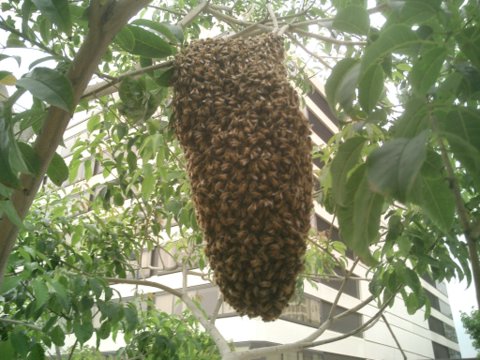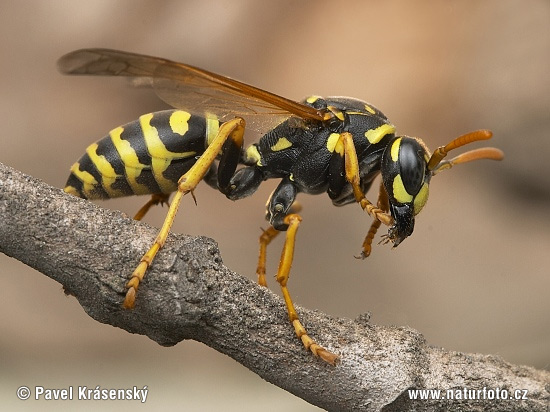Thursday, October 7, 2010
Away
Im going to be away for another extended period of time. But it wont be long! Ill see you all soon.
Tuesday, October 5, 2010
Queen bees.
Info Block of the week.
When conditions are favorable for swarming, the queen will start laying eggs in queen cups. A virgin queen will develop from a fertilized egg. The young queen larva develops differently because it is more heavily fed royal jelly, a protein-rich secretion from glands on the heads of young workers. If not for being heavily fed royal jelly, the queen larva would have developed into a regular worker bee. All honey bee larvae are fed some royal jelly for the first few days after hatching but only queen larvae are fed on it exclusively. As a result of the difference in diet, the queen will develop into a sexually mature female, unlike the worker bees.
Queens are raised in specially constructed queen cells. The fully constructed queen cells have a peanut-like shape and texture. Queen cells start out as queen cups. Queen cups are larger than the cells of normal brood comb and are oriented vertically instead of horizontally. Worker bees will only further build up the queen cup once the queen has laid an egg in a queen cup. In general, the old queen starts laying eggs into queen cups when conditions are right for swarming or supersedure. Swarm cells hang from the bottom of a frame while supersedure queens or emergency queens are generally raised in cells built out from the face of a frame.
As the young queen larva pupates with her head down, the workers cap the queen cell with beeswax. When ready to emerge, the virgin queen will chew a circular cut around the cap of her cell. Often the cap swings open when most of the cut is made, so as to appear like a hinged lid.
During swarming season, the old queen will likely leave with the prime swarm before the first virgin queen emerges from a queen cell.
When conditions are favorable for swarming, the queen will start laying eggs in queen cups. A virgin queen will develop from a fertilized egg. The young queen larva develops differently because it is more heavily fed royal jelly, a protein-rich secretion from glands on the heads of young workers. If not for being heavily fed royal jelly, the queen larva would have developed into a regular worker bee. All honey bee larvae are fed some royal jelly for the first few days after hatching but only queen larvae are fed on it exclusively. As a result of the difference in diet, the queen will develop into a sexually mature female, unlike the worker bees.
Queens are raised in specially constructed queen cells. The fully constructed queen cells have a peanut-like shape and texture. Queen cells start out as queen cups. Queen cups are larger than the cells of normal brood comb and are oriented vertically instead of horizontally. Worker bees will only further build up the queen cup once the queen has laid an egg in a queen cup. In general, the old queen starts laying eggs into queen cups when conditions are right for swarming or supersedure. Swarm cells hang from the bottom of a frame while supersedure queens or emergency queens are generally raised in cells built out from the face of a frame.
As the young queen larva pupates with her head down, the workers cap the queen cell with beeswax. When ready to emerge, the virgin queen will chew a circular cut around the cap of her cell. Often the cap swings open when most of the cut is made, so as to appear like a hinged lid.
During swarming season, the old queen will likely leave with the prime swarm before the first virgin queen emerges from a queen cell.
Monday, October 4, 2010
Last minute trip.
Sorry guys for the random absence. I was asked to go up to Grand Marais, MN for the changing of the seasons. It was beautiful. I have a couple pictures here. Sorry for my finger xD
I will be back on track with the daily blogging starting tomorrow :).
I will be back on track with the daily blogging starting tomorrow :).
Thursday, September 30, 2010
"Killer" Bees
The Africanized Honeybee, also known as the "killer bee" lives in South America and the Western and Southern United States. They have been known to chase people for over a quarter of a mile once they get excited and aggressive.
Even though they are called "Killer" bees, their venom is no more dangerous than regular honeybees. Their attacks are more harmful because they tend to attack in greater numbers, increasing your chance of having a severe allergic reaction to the venom released when they sting you.
Even though they are called "Killer" bees, their venom is no more dangerous than regular honeybees. Their attacks are more harmful because they tend to attack in greater numbers, increasing your chance of having a severe allergic reaction to the venom released when they sting you.
Wednesday, September 29, 2010
Carpenter Bees.
One of the bees I hate the most is the carpenter bee.
Carpenter bees are solitary bees. They build nests just for themselves and only feed their own young. They get their name from their ability to drill through wood. Carpenter bee stingers are not barbed, so they are able to sting over and over again.
Carpenter bees are solitary bees. They build nests just for themselves and only feed their own young. They get their name from their ability to drill through wood. Carpenter bee stingers are not barbed, so they are able to sting over and over again.
I hate some bugs....
So today as I was washing my hands, an earwig fell off the towel and into my sink. I let it go down the drain of course. If you don't know what an earwig is, here's a picture.
In the summer, my house was infested with earwigs and I guess they plan on staying for the winter. Bleach and water is loaded into a spray bottle and I'm prepared to spray my whole house down.
Wasps
The type of nest produced by wasps can depend on the species and location. Many social wasps produce paper pulp nests on trees, in attics, holes in the ground or other such sheltered areas with access to the outdoors. By contrast solitary wasps are generally parasitic or predatory and only the latter build nests at all. Unlike honey bees, wasps have no wax producing glands. Many instead create a paper-like substance primarily from wood pulp.
Tuesday, September 28, 2010
Bumble Bees
Bumblebee nests are first constructed by over-wintered queens in the spring (in temperate areas). Upon emerging from hibernation, the queen collects pollen and nectar from flowers and searches for a suitable nest site. The characteristics of the nest site vary among bumblebee species, with some species preferring to nest in underground holes and others in tussock grass or directly on the ground. Once the queen has found a site, she prepares wax pots to store food, and wax cells into which eggs are laid.
Monday, September 27, 2010
First Post
This is my first post, lets see how these go. I'll try to post daily!
Ill do a bee a day with a random fact, if I run out of bees Ill post more in depth information another day
HONEY BEES
All honey bees live in colonies where the worker bees will sting intruders as a form of defense, and alarmed bees will release a pheromone that stimulates the attack response in other bees.
Ill do a bee a day with a random fact, if I run out of bees Ill post more in depth information another day
HONEY BEES
All honey bees live in colonies where the worker bees will sting intruders as a form of defense, and alarmed bees will release a pheromone that stimulates the attack response in other bees.
Subscribe to:
Posts (Atom)









